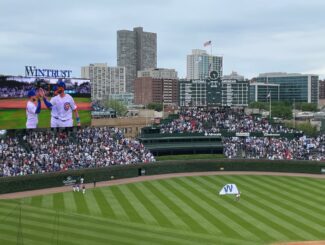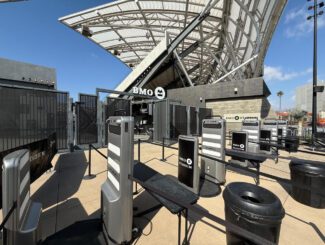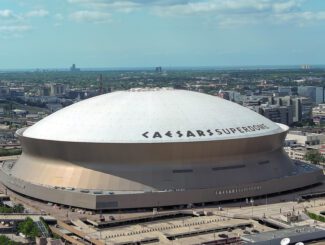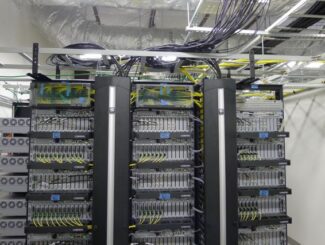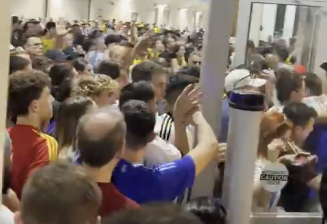
As we wait to see whether or not anyone accepts or gets hit with the blame (or any legal charges) for the fan fiasco that was the Copa America final Sunday, one thing is for sure — the event organizers CONMEBOL and the host venue, Hard Rock Stadium, have delivered a huge “don’t do this” example for other venues planning to host big events.
If you didn’t see the stories or any of the numerous social media posts, a series of swarms from fans who allegedly didn’t have tickets to the event overwhelmed the security and ticketing infrastructure in place, with people leaping over turnstiles, pushing past security, and even in one case apparently tearing apart and climbing through ventilation ducts to get inside to see the game. As far as we know there were no fatalities, but questionable reactions — like slamming the gates closed when people were already pushing forward — produced a lot of discomfort, especially in the heat and sun of south Florida in the summer.
We’ve posted just a few of the numerous videos available of what has to be every big venue’s nightmare — a mob of people bent on getting in, who know that most of them probably won’t be caught. For all the details, the Miami Herald’s Michelle Kaufmann and the Athletic had good if harrowing summaries of what happened, a widespread fiasco that delayed the start of the match between Argentina and Colombia. The Herald also did a second-day wrapup that is worth a read to get more details of why police closed and opened the gates, at one point letting in many people without any checks for tickets or security scanning.
While we can’t confirm what the security and ticketing setup looked like at every entry gate, some of the videos we saw on social media showed an entry deployment with CEIA Opengate walk-through security scanners placed directly in front of a short chute that led to some kind of barred turnstile where ticket authentication would likely take place.
Such dated setups almost always cause big lines, simply because walking past the scanners takes no time, making the ticketing check the bottleneck. Lines can then quickly back up through the security gates, and when more fans come from outside to try to get in, any semblance of an orderly procession can quickly fall apart.
At many events that just means a long line that forces an unwelcome wait. But recent history has shown that depending on the event, sometimes fans don’t want to wait and will take matters into their own hands, storming the gates en masse to push into the venue. This has happened at venues like Ohio Stadium and SoFi Stadium, but never before at the level of chaos seen at Hard Rock Stadium Sunday night.
At the biggest events like the NFL’s Super Bowl (which Hard Rock Stadium has hosted multiple times) the standard security deployment these days typically involves several layers of secure perimeters spreading out from the stadium itself. Such a setup has proven very effective at keeping non-ticketholders and non-participants at a far reach from being able to do things like push past security, climb over fences or even get into air ducts to gain access.
Even bigger problems can come when people get inside in a panic — in this case, fans ended up trashing various parts of the stadium, including an escalator, and the video below shows mayhem at the suite level entry. Sure, outrageous fan behavior like this has no defense. But you can’t just throw your hands up and say “we never expected this.” If you’re going to charge hundreds of dollars for tickets and $25 for a beer there is some expectation that the venue owner and promoters will have some foresight and develop a plan to keep the paying customers happy.
So why were such standard procedures not put in place for the Copa America matches? We’re still trying to get an answer to that, with both the event promoter CONMEBOL and the Hard Rock Stadium issuing dueling press releases that use a lot of words to basically say, “it’s not our fault, ask the other guys.” We’ve asked Hard Rock Stadium a couple times for someone to directly answer who was responsible for the security and ticketing setup, but have not received an answer or a live person to speak with. Our guess is we won’t find out the final answer as to who is responsible until the inevitable lawsuits get filed. But it’s a very bad look for all involved.
The one even bigger question now is about what might happen to Hard Rock Stadium’s current schedule of hosting games for the 2026 World Cup. Though World Cup organizer FIFA generally uses the same kind of secure-perimeter setups like the Super Bowl, even if it turns out that the setup errors for Sunday’s match are CONMEBOL’s fault, you also have to question why an experienced venue like Hard Rock Stadium would allow such practices on its turf. It’s like handing the keys to your Porsche to someone with a history of crashing cars.
Our final guess on the mess is that it somewhere came down to someone wanting to save money, figuring they were OK with a stripped-down setup instead of one with more insight to handle what might happen at an oversold event with national-emotion overtones. At the very least, all other big-event venue owners should take note, and watch some of those videos again if you need a refresher on what NOT to do.




